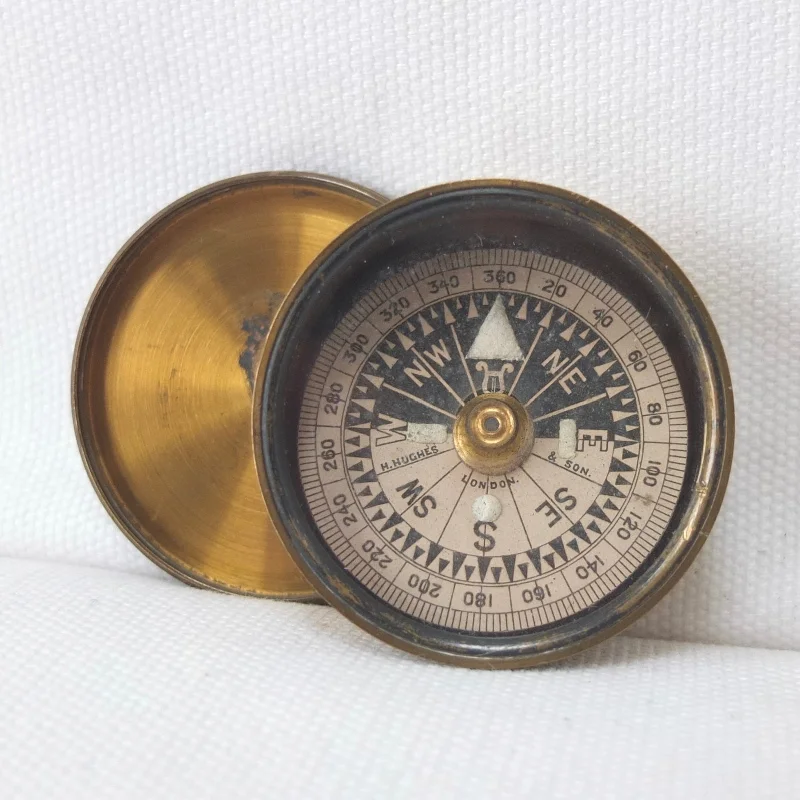A Hughes & Son Singer's Patent-type luminous pocket compass, dating from c.1880. The paper compass card is hand drawn in the classic Singer's design, and signed by 'H. Hughes & Son, London. It is likely that the compass was made by Francis Barker & Son and retailed by Hughes, as the compass card is identical to those known to have been made by Barker. The compass has luminous paint markers at the four cardinal points. This type of luminous paint, most probably an early version of 'Balmain's Luminous Paint' was a compound of calcium sulphide. The paint was made luminous by exposure to sunlight or by burning a strip of magnesium ribbon near the compass card. It was patented in England by William Balmain, and was often used in compasses during the last quarter of the 19th century. The compass has a jewelled pivot, brass box case, and a push-fit lid. The case retains much of its original lacquered finish. There is also a mark inside the lid where the oval instruction label would originally have been glued to the interior of the lid.
H. Hughes & Son: the company was founded in 1828, originally as a clock maker, optician, and nautical instrument maker in the East End of London. They supplied sextants and chronometers to ships coming into the Thames. Henry Hughes and his brother Joseph were both apprenticed to their father in the early 19th century. Henry was known to have been working from 1840 at 3 Union Terrace, Commercial Road, London, from 1845-55 at 120 Fenchurch Street, from 1859-75 at 50 Fenchurch Street and from 1867 at 36 Trinity Square, Tower Hill. Henry's son, Alexander joined the firm in 1875 and it became H. Hughes & Son. In 1903 the company became H. Hughes & Son Ltd, and continued to trade into the 1940s. In 1947 the company merged with Kelvin Bottomley & Baird Ltd. to become Kelvin & Hughes Limited.
Francis Barker & Son: were established in London in 1848, as a maker of compasses and scientific instruments. Francis Barker produced a very wide range of compass designs over the years, supplying major retailers such as Negretti & Zambra, J. Lizars, C. W. Dixey, Dollond, and many others. The company prospered until 1932, when it was taken over and became F. Barker & Son (1932). After WW2 the company changed hands several times and is now part of Pyser-Optics of Edenbridge in Kent. They continue to produce the renowned Barker M-73, widely acknowledged to be the world's finest prismatic compass. Further details of Barker compasses can be found in Paul Crepsel's excellent book Trade Mark London (available to view online).
Samuel Berry Singer (1796 - c.1875) was a master mariner from Southampton when he patented his unique design in July 1861. Its high contrast design was intended to be much easier to read in low light than conventional compasses of the time. His design was widely adopted by scientific instrument makers, but Singer himnself did not benefit greatly from his invention, the patent lapsed in 1868, and he ended his days living in poverty in Kincardine on the Firth of Forth. Versions of his design continued to be made until the First World War.
Condition:
In very good condition and full working order. The compass finds North very well. The compass card and glass are in very good condition. The case and lid are in very good condition, with a few marks and some wear to the original lacquered brass finish.
Dimensions: 52mm x 25mm

